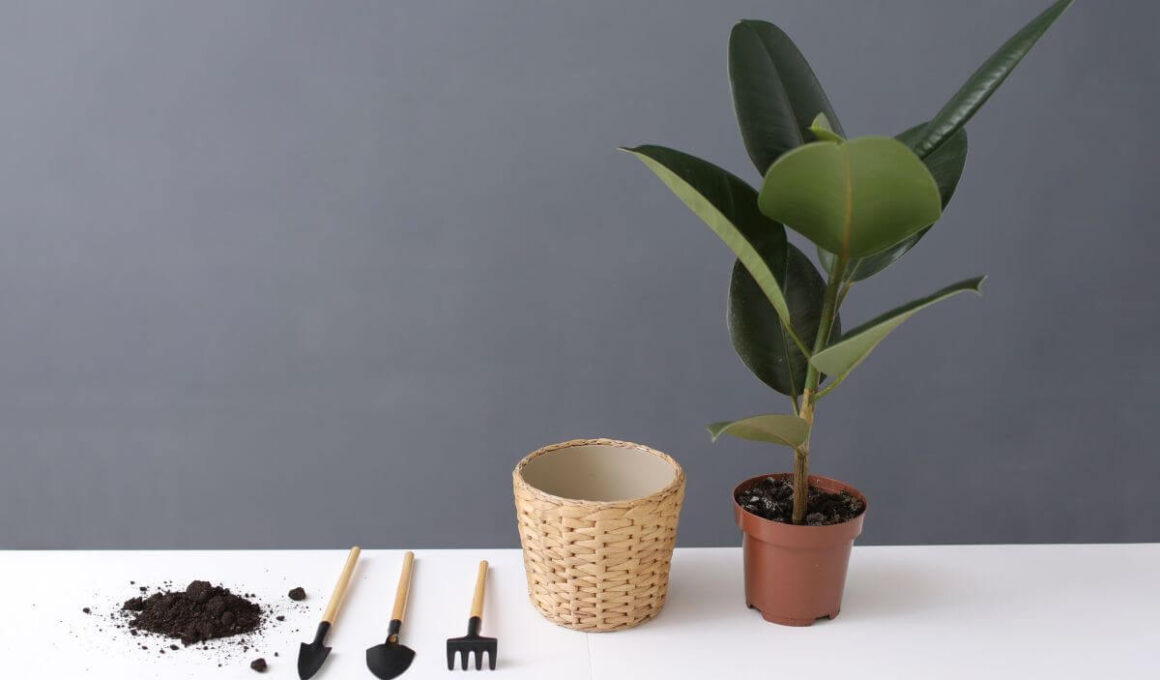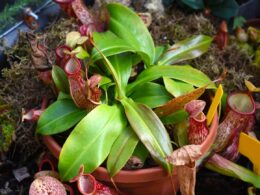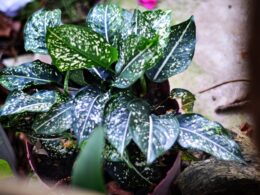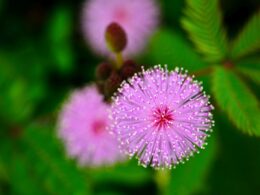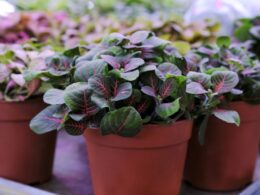What Is a Ficus? Ficus Species, Their Origins and Appearance
Before we get into ficus plant care, let’s establish which plants we’ll be talking about. Ficus trees grow in tropical and subtropical regions around the world. There are over 800 species in the Ficus genus, and many of them are popular houseplants. Some common ficus varieties are:
- Ficus benjamina (weeping fig)
- Ficus elastica (rubber tree)
- Ficus lyrata (fiddle leaf fig)
- Ficus pumila (creeping fig)
- Ficus religiosa (sacred fig)
As you can see, ficus plants come in a wide range of shapes and sizes. In this article, we’ll cover the needs of the weeping fig (Ficus benjamina). This is the species most commonly sold under the name ‘ficus.’ It’s native to Asia and Australia, and it’s a tree with gracefully drooping branches and glossy leaves.
Ficus Plant Care – Soil Type and Fertilizer
Ficus trees grow best in acidic, fast-draining potting mix. If your soil is too dense, it will hold too much water and cause the roots to rot. A good mix is made up of equal parts peat moss, perlite, and bark chips or coarse sand.
Although weeping figs aren’t too picky about their soil, fertilizing is a key part of ficus plant care. They’re heavy feeders and rapid growers. We recommend feeding your ficus with a slow-release fertilizer at the beginning of spring. Then, you can fertilize it once a month throughout summer and once every two months in the fall and winter.
Ficus Plant Care – Watering
Weeping figs are drought-tolerant once they’re established, but they prefer to be kept on the moist side. Water your ficus tree when the top inch of soil is dry. In the summer, you may need to water it several times a week. Cut back on watering in the winter, allowing the soil to dry out slightly between watering sessions.
How Much Light Ficus Plants Need
Ficus trees enjoy bright, indirect light, with an extra bit of sun in the morning. If you can’t provide this, your plant may drop leaves. On the other hand, when ficus are exposed to too much direct sunlight, their leaves will scorch.
Ideal Temperatures and Humidity for Ficus Plants
Weeping figs are tropical plants, so they enjoy warm temperatures and high humidity. They’ll do best in your home if the temperature is between 75 and 85 degrees Fahrenheit during the day and over 65 degrees at night. If your ficus is exposed to drafts or drastic temperature changes, it may drop leaves.
To raise the humidity around your ficus tree, you can:
- place the pot on a tray of pebbles and water;
- use a humidifier;
- group ficus plants together (this also creates a microclimate);
- mist the leaves with water every day.
Pruning Weeping Fig Plants
Pruning is an optional part of ficus plant care, but it’s often necessary because of how fast these plants grow. They’ll often reach the ceiling if left unpruned! You can prune ficus trees any time of year, but it’s best to do it in winter when they aren’t actively growing. Use sharp, clean shears to make clean cuts.
Also, remove any yellow or brown leaves as you see them. These are usually caused by too much or too little water, but they can also be a sign of pests or disease.
How to Propagate Weeping Fig Plants
Weeping figs are easy to propagate from stem cuttings. Just take a cutting that’s 3-5 inches long and has at least two sets of leaves. Make the cut just below a set of leaves, then remove the bottom leaves.
Dip the end of the cutting in rooting hormone (this is optional but helpful), then plant it a container filled with moist peat moss. Create a humid environment by placing the pot in a plastic bag or covering it with a clear container.
Keep the pot in a bright spot, out of direct sunlight, and wait for the cutting to root. Mist it daily, and water if the soil begins to dry out. After 2-4 weeks, cut slits in the plastic bag or lift the clear container to allow for better air circulation. Once the cutting has rooted and begun to grow, you can transplant it into a pot of its own!
Repotting Weeping Fig Plants
Ficus trees are fast growers, so they’ll need to be repotted every one to two years. The best time to do this is in early spring. Choose a pot that’s only one size larger than the current one and has drainage holes. Be careful when handling ficus trees, as their roots are delicate.
Common Problems with Ficus Plants
Ficus plant care isn’t too hard, but they can be susceptible to a few problems. Here are the most common and what to do about them.
- Aphids, mealybugs, whiteflies, and scale insects can all infest ficus plants. If you see pests on your plant, wipe them off with a damp cloth or use an insecticidal soap.
- Overwatering ficus trees is a common mistake. If the leaves are yellow and dropping, it may be a sign of root rot. Allow the soil to dry out slightly between watering sessions.
- Ficus trees are also susceptible to fungal diseases like leaf spot. These can be caused by too much water or humidity. Remove affected leaves and increase air circulation around the plant.
Ficus Plant Toxicity
Ficus plants are toxic to pets and humans if ingested. The sap can also cause skin irritation. If you have ficus trees in your home, keep an eye on small children and pets who may try to eat the leaves or bark.
That’s it for ficus plant care! With a little bit of TLC, your ficus tree will thrive indoors. Just remember to water and fertilize it regularly, prune it as needed, and repot every one to two years.
Do you have any more tips to share? Let us know in the comments below!





